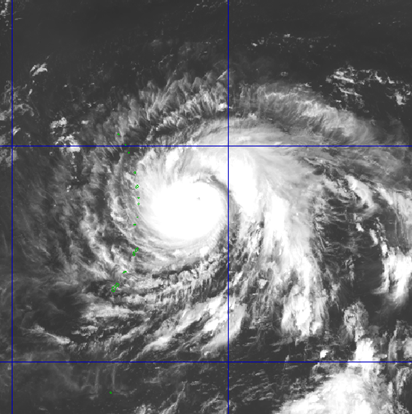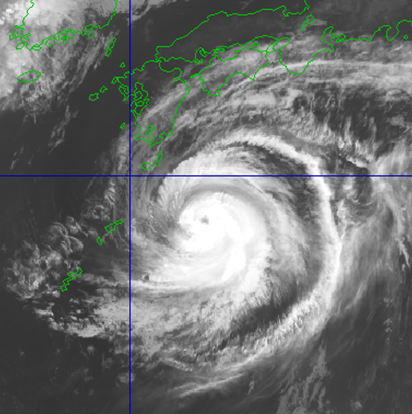Why do typhoons occur?
 |
First, When sea surface temperature is high, updrafts are more likely to occur, so many updrafts occur over tropical oceans. Many cumulonimbus clouds generated by this airflow come together to form a vortex. The pressure near the center of the vortex decreases, and it further develops into a tropical cyclone, with wind speeds exceeding 17 m/s. It will be called a typhoon. |
|---|
Life of a typhoon
 |
nascent period The period during which typhoons occur. It often occurs at sea near the equator. As mentioned in "Why do typhoons occur?", typhoons often occur over the ocean where sea surface temperatures are high. |
|---|---|
 |
developmental period This is the period from when a typhoon becomes a typhoon until the central pressure drops and the typhoon becomes most powerful. It absorbs a lot of water vapor that provides energy from the warm ocean surface, causing the central pressure to drop rapidly and the wind speed near the center to rapidly increase. |
 |
peak period This is the period when the central pressure is the lowest and the maximum wind speed is the strongest. As the typhoon moves northward, the central pressure tends to gradually weaken. However, the range of strong winds will be wider. |
 |
period of weakness This is the period when the cyclone turns into a tropical cyclone or an extratropical cyclone. This is because the sea surface temperature near Japan is low, which reduces the supply of water vapor that provides energy. |
©Source: Japan Meteorological Agency “Typhoon Life”
Typhoon size and strength
Typhoons have a scale determined by the Japan Meteorological Agency that indicates their approximate strength. "Size" is classified by the radius of the storm area (the area where wind speeds of 15 m/s or more may blow), and "strength" is classified by the maximum wind speed. I am.
classification of strength
| class | maximum wind speed |
|---|---|
| strong | 33m/s (64 knots) or more but less than 44m/s (85 knots) |
| very strong | 44m/s (85 knots) or more but less than 54m/s (105 knots) |
| ferocious | 54m/s (105 knots) or more |
size classification
| class | Radius with wind speed of 15m/s or more |
|---|---|
| large | 500km or more but less than 800km |
| super large | Over 800km |
After the typhoon
When cold air comes in from the north, it creates a front that is the boundary between cold and warm air.
It changes to 'extratropical cyclone'. At this time, the peak wind speed has often passed near the center of the cyclone, but as the range of strong winds expands, there is a possibility that major disasters may occur even away from the center of the cyclone. there is.
Additionally, if a typhoon continues to weaken, it may turn into a "tropical cyclone". In this case, the maximum wind speed is simply less than 17 m/s, which is the condition for a typhoon, and strong rain may fall.
Therefore, caution is required even if the cyclone changes to a "temperate cyclone" or a "tropical cyclone."


